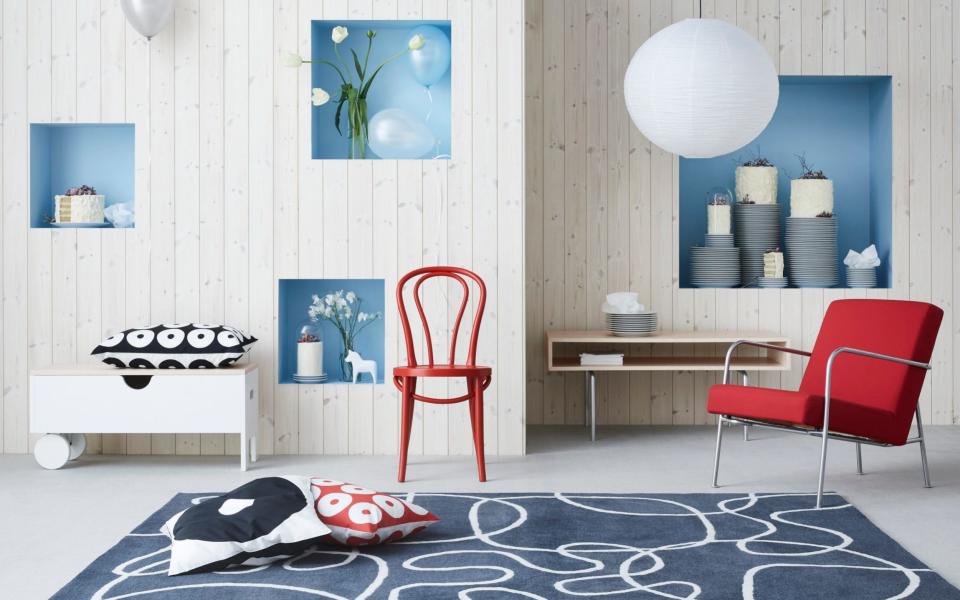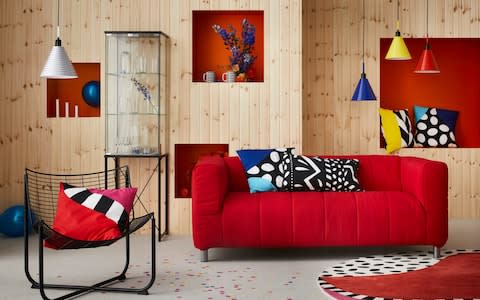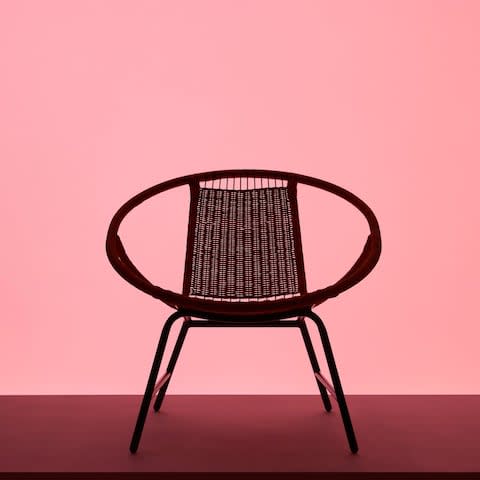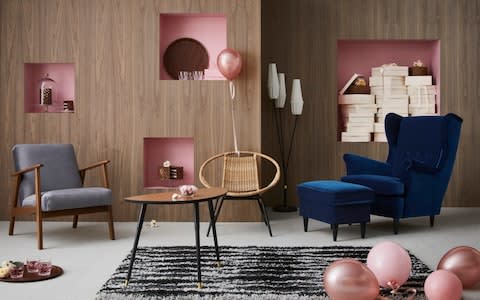Ikea is a more than just somewhere to buy convenient flatpack furniture - it's a design goldmine

It regularly wins design awards, it has collaborated with some of the world’s most creative people, and the influential online magazine Dezeen last year named it “the most newsworthy force in design”.
Ikea isn’t just about convenience, low prices and meatballs. As it marks its 75th anniversary, it’s celebrating its design heritage, too.
Seventeen-year-old Ingvar Kamprad registered Ikea as a business in 1943, and, so the story goes, initially dealt in pencils and matches before focusing on home furnishings.
He sold mail-order furniture, became an early champion of flat-pack design and opened his first store in 1958. By the time the 91-year-old Kamprad died earlier this year, he was presiding over a business that generated global retail sales of £33.5 billion.
For its 75th anniversary, Ikea is reissuing a handful of products from five decades of its history.

Those from the Eighties might bring a pang of nostalgia – the Klippan sofa, with its boxy shape and fluted, puffy upholstery, for example – but those objects that predate the first UK store opening in 1987 are brand new to our eyes. Gagnet, a rounded rattan armchair with splayed legs, has a classic Fifties silhouette, while Strandmon, a wingback armchair, explores more traditional territory.
The products are being released in tranches, with the Fifties and Sixties designs already in the shops, the Seventies and Eighties arriving this month and the Nineties coming to stores in December.
“Klippan was my first sofa; I dreamt about having it,” says Ikea’s Karin Gustavsson, who was charged with deciding which products should be reissued out of the thousands in the back catalogue. “I also used to have the black metal mesh armchair, which has now been renamed Råane. I had it with a sheepskin on it; it was the coolest.”
Now, she says her sons are into those same Eighties designs. They haven’t seen them before, and the design of that era has become hip again across fashion as well as interiors. “It wasn’t as easy as it looked, even though I had all the catalogues to go through,” says Gustavsson, about how she decided which products to reissue.

“For many of the designs going back a very long way, it was so difficult. We didn’t even have drawings.” The project took her on journeys to visit the original creators, such as retired textile designer Åsa Gray, who just happened to have kept her original drawings for jazzily patterned rugs and cushions, complete with the correct Pantone reference colours.
Scandinavian design is revered the world over, and while Ikea works with a team of 10 to 15 in-house designers, it has always used external contributors. Some of them, like Gray, are highly regarded in their field.
Ikea’s guiding philosophy of “democratic design” gives anyone the chance to own something created by a revered designer. Thomas Sandell, for example, was among those who in the Nineties worked on the first PS collection – Ikea’s more design-led range – but his CV also includes work for high-end brands such as B&B Italia and Georg Jensen.
“In the old days people weren’t so concerned about [named] designers, but it’s more important now, because they like to know something of the story behind a product,” says Gustavsson. Cool brands, such as Tom Dixon and streetwear designer Chris Stamp, now fall over themselves to work with Ikea.

The roster of partnerships increasingly looks outside of Scandinavia, and beyond homeware designers: consumer electronics company Teenage Engineering is developing a range of portable speakers and light systems, and ultra-hip American fashion designer Virgil Abloh, the artistic director of Louis Vuitton’s menswear collection, is developing a second range, both launching in 2019.
Rapper Kanye West was spotted touring Ikea’s headquarters in 2016, later telling the BBC: “I have to work with Ikea – make furniture for interior design, for architecture”.
Recent limited-edited collaborations have resulted in a healthy secondary market for the most coveted items, such as Ilse Crawford’s Sinnerlig cork-topped tables and stools from 2015. And if you happen to have a pair of Verner Panton-designed Vilbert chairs, which featured fleetingly in the catalogue for one year only, in 1994, you can sell them on online vintage marketplace 1stdibs for around £1,800.

There is an argument that Ikea’s most creative ideas aren’t to do with the outward appearance of an object, but what goes on in its assembly or packaging, in the name of sustainability or cost.
The Lack range uses a “board on frame” system, for example, in which fibreboard is clad around a hollow frame that’s reinforced with a honeycomb-like matrix of paper. It’s lighter, uses less timber than a solid-wood product and has helped bring the price down to an astonishing £9 for a coffee table.
Last year London’s Design Museum shortlisted Ikea’s new furniture assembly method as part of its Designs of the Year award. It’s a “wedge dowel” joint that does away with the need for screws and Allen keys, so the furniture clicks together instead: a boon for flat-pack objectors who hate screwing things together, and cumulatively it also represents the saving of an awful lot of metal.
Ikea’s popularity has also led to the rise of many unaffiliated partner companies, which capitalise on the products’ ubiquity and modular assembly by selling more special or design-led alternatives for standard models.

Prettypegs, for example, makes fashion-forward replacement legs for products such as beds, tables and sofas (for example, copper hairpin legs for a dining-table top); Superfront can upgrade a kitchen cupboard carcass with its graphic-patterned door fronts and upmarket handles; and Bemz makes custom-made replacement loose covers for sofas.
“We felt that attaching our business to the Ikea ecosystem would enable us to offer our products to a broader clientele, to people that are interested and passionate about interior design, but cannot usually afford premium-design kitchens.
"We believe that good taste and quality design should not be synonymous with a high price,” says Sebastian Schauman, who co-founded A S Helsingö, which designs and makes alternative kitchen cupboard and wardrobe fronts for Ikea’s systems.
“We collaborate with interesting, up-and-coming Scandinavian designers and artists who we think are up to something new and exciting, and we always try to come up with something unique and personal that our customers cannot find anywhere else,” says Schauman.

The door fronts, made in Finland’s lake district (known for its high-quality joinery), use traditional carpentry techniques. “These types of doors have typically been available only in premium-priced kitchens, until now,” says Schauman.
A S Helsingö’s ceramic knobs are made by Helsinki-based ceramic artist Leena Kouhia and are delightfully irregular, looking like speckled glazed pebbles. (Of course, there’s nothing to stop you buying replacement knobs and handles from any source, to disguise your plain Ikea kitchen).
Schauman is full of praise for Ikea – and not just because it’s literally the framework for his business. “The interesting thing is that Ikea products are not at all synonymous with generic budget furniture,” he says. “Today, nobody raises an eyebrow if you mix them with expensive design pieces in your home.
“Ikea has democratised design, and making good design available for everyone has created a better everyday life for many people. The world has changed a lot in the last 75 years, but Ikea has succeeded in staying relevant.”

 Yahoo Finance
Yahoo Finance 